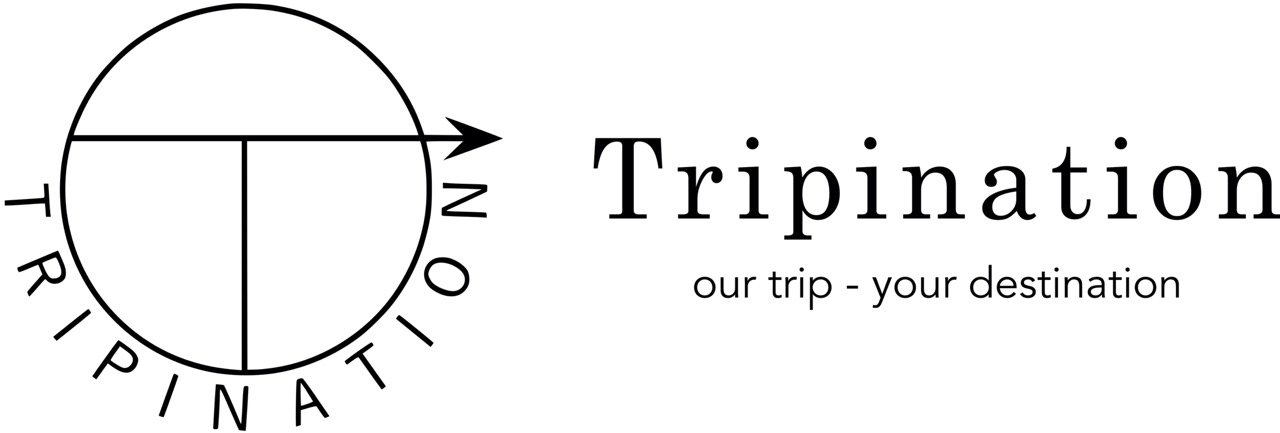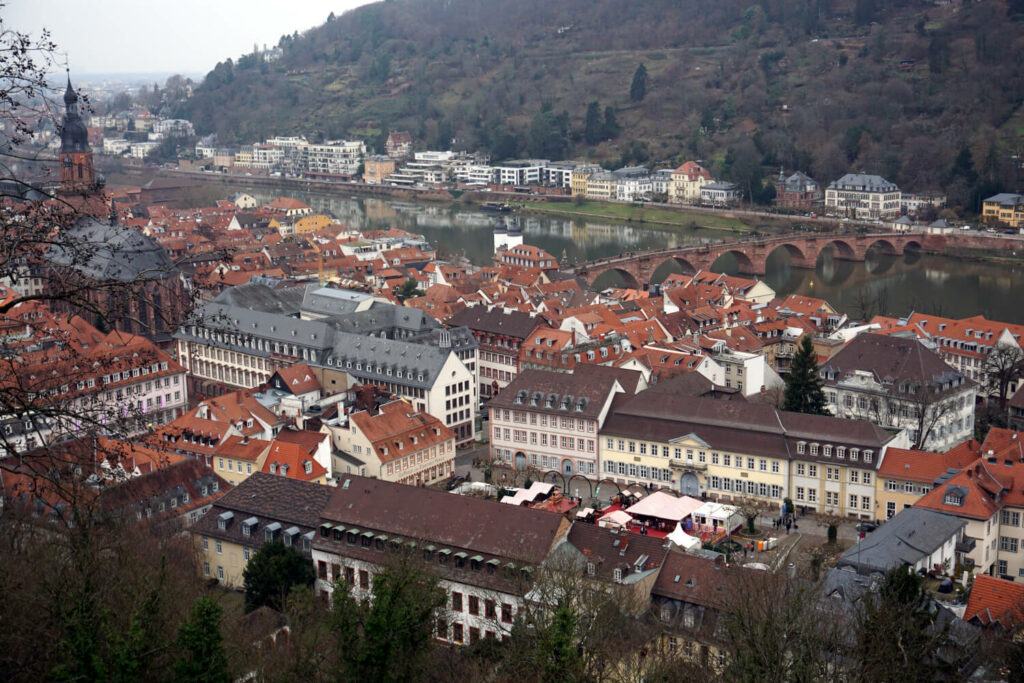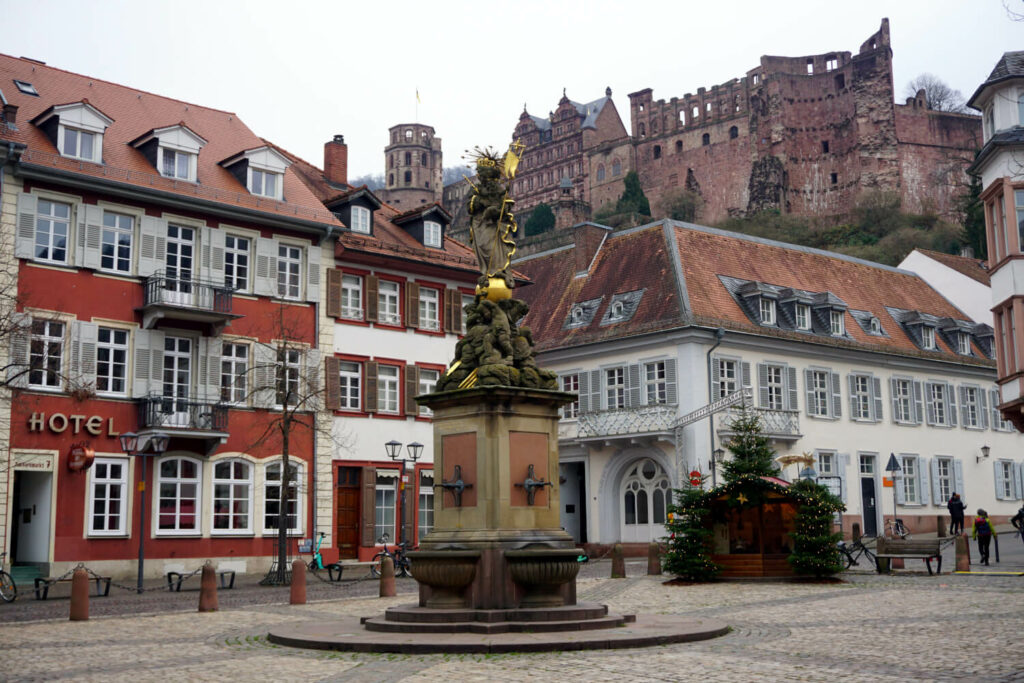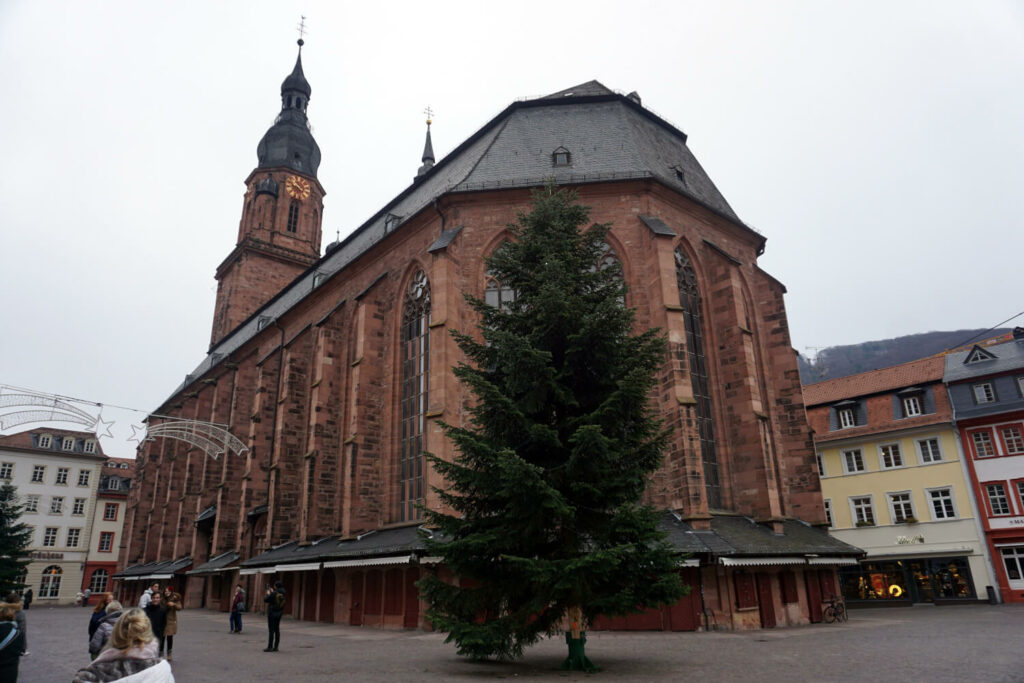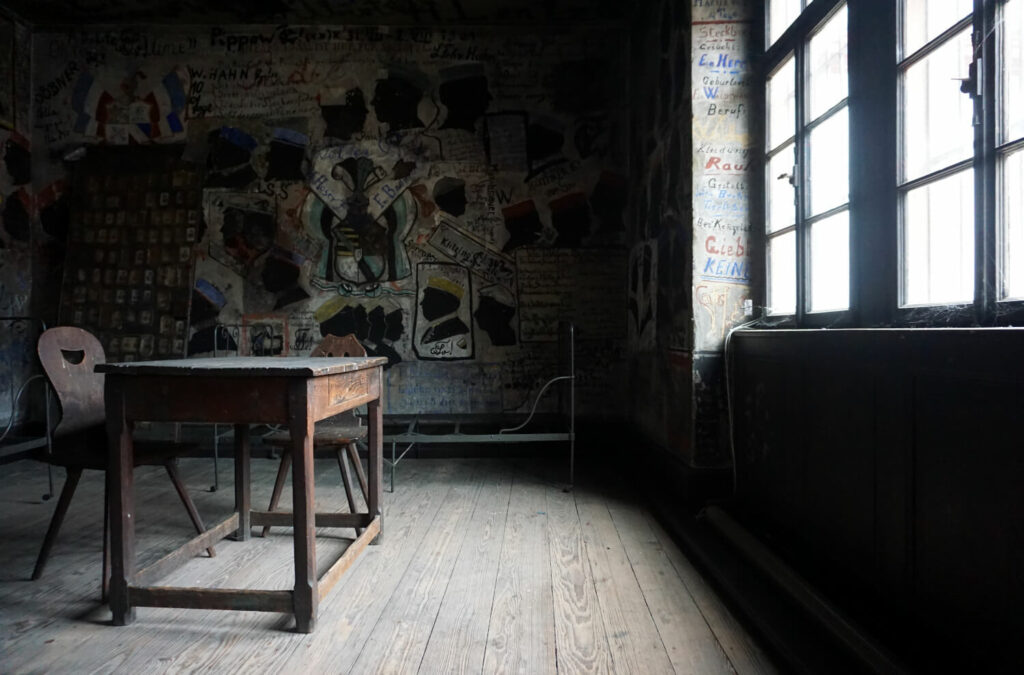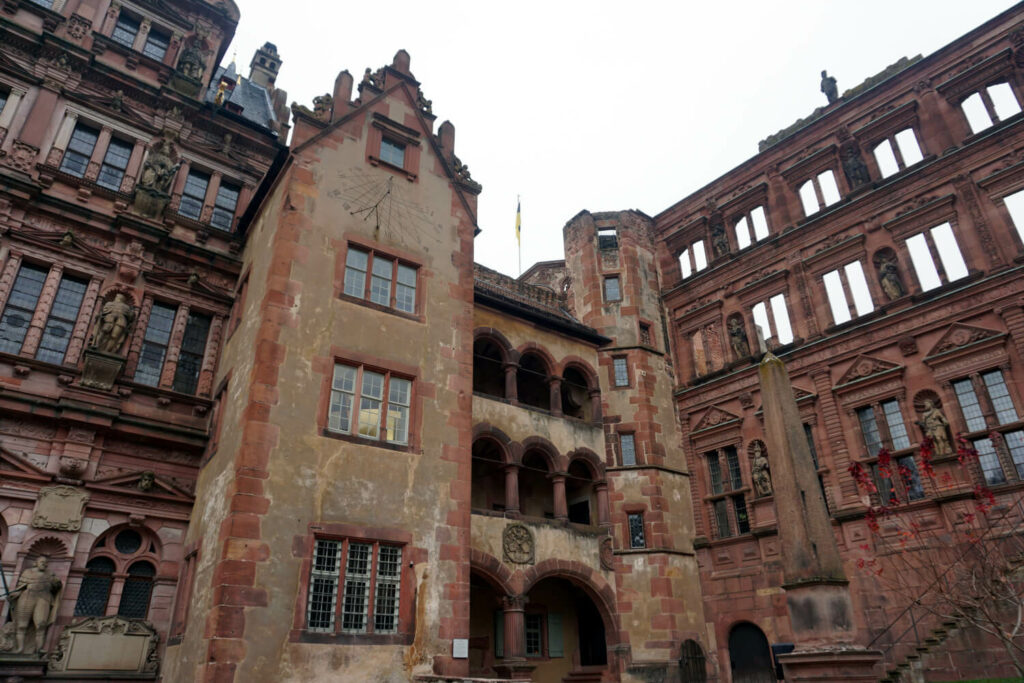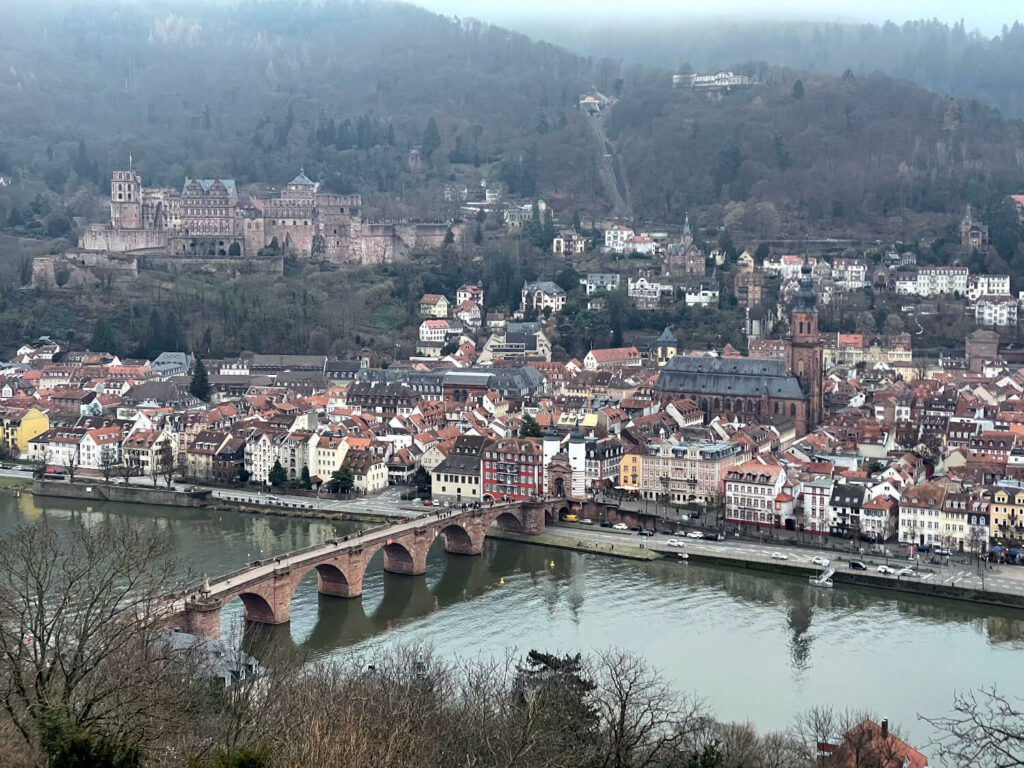Heidelberg
The hype is real in Heidelberg. What thousands of tourists have experienced before us, we now wanted to catch up on at the end of the year. We got ready for a day trip towards Baden-Württemberg and to the city of culture, science and history located on the Neckar River. Follow us on our walk through the winterly Heidelberg.
Walking tour through the old town
We arrived by car and first drove to the parking garage Kornmarkt/ Schloss P12 (cost: 11,50 € for 7,5 hours). From here, all the sights are within easy walking distance. We first steered our steps towards Kornmarkt. Next to the market square, the Kornmarkt is the central square in Heidelberg’s old town. With its view of the castle, the Kornmarkt is thus a much sought-after location for photographs.
The market square scores points in return with the Heiliggeistkirche (Church of the Holy Spirit). The church, which was built in the 14th century, not only shapes the city panorama, but also invites visitors. The accessible tower offers a panoramic view of the city. The outside market stalls around this gothic building are also eye-catching.
On to new shores
The Old Bridge is a special highlight in Heidelberg. Especially as a photo motif with the castle and the city in the background, the bridge is a landmark of the city. In front of the bridge stands the Heidelberg Bridge Monkey. A perfect tourist attraction with history and direct application. Its head, for example, is hollow and therefore a popular photo opportunity. Depending on what you touch (little and index finger of the right hand; mirror or mice), you get a return to Heidelberg, prosperity or many children prophesied. Try it out.
The university in Heidelberg is world famous and the oldest university in Germany. The old as well as the new university can be found at the Universitätsplatz. However, we were first interested in the Studentenkarzer. These former detention rooms for students are also a popular place for tourists. Many of the inmates “imprisoned” there used their time with wall scribbles and thus made themselves immortal. This brought back memories of my own student days and my 6-man shared flat in Stuttgart. Things didn’t look much better there either. A visit to the university museum is also recommended, which is entered through the university store and is included in the ticket price to the Studentenkarzer.
Up to the top
First we took the Heidelberg cable cars (Heidelberger Bergbahnen) to Heidelberg Castle. The valley station is within spitting distance of the parking garage mentioned at the beginning. At the first stop we went out. The castle, or rather the ruins of it, was our next stop. This impressive area with the 16th century building, the castle garden, the Great Barrel as well as the Apothecary Museum and the Knight’s Leap offers plenty to discover. Furthermore, there is a great view of the city and the Neckar River.
The journey continued in the direction of the Königstuhl and up to an altitude of over 500 meters. The Königstuhl is reached by one of the oldest German funicular railroads. From here, a breathtaking view of the Neckar valley and the city reveals itself. We probably could have even looked as far as Hesse. Probably. Unfortunately, the weather did not cooperate on the day of our visit. We could just barely see our hand in front of our own face. Too bad. Next time. Anyway, the ride was already entertaining and reminded us of Santiago de Chile and the funicular there.
On the paths of poets and thinkers
Back in the old town, we changed sides of the Neckar and meandered up the Schlangenweg to the Philosophenweg. From here we marched westward and always had the postcard panorama of Heidelberg in front of our eyes (as long as we turned around, of course). This path was certainly also taken by the famous visitors, such as Goethe, Heine or Hölderlin, of this city from time to time.
We made our way back along the main street (Hauptstraße), which runs once through the old town and is one of the longest shopping streets in Europe. This was the end of our entertaining visit to Heidelberg. We can now relate to the hype and would like to close on the lines of Johann Wolfgang Goethe: We saw Heidelberg on a foggy winter’s day, made cool and invigorating at the same time by a pleasant air. The city in its location and with all its surroundings has, we can write it, something ideal.
